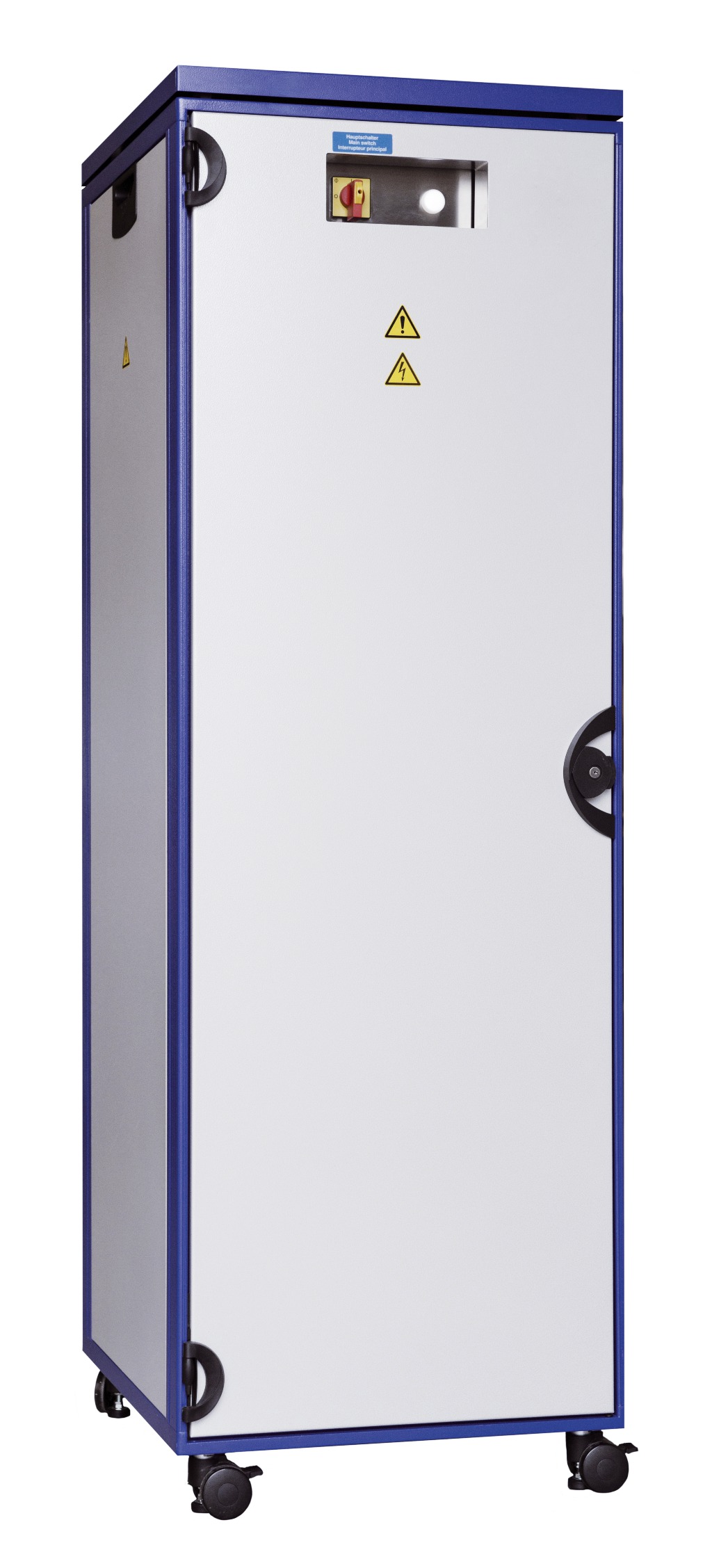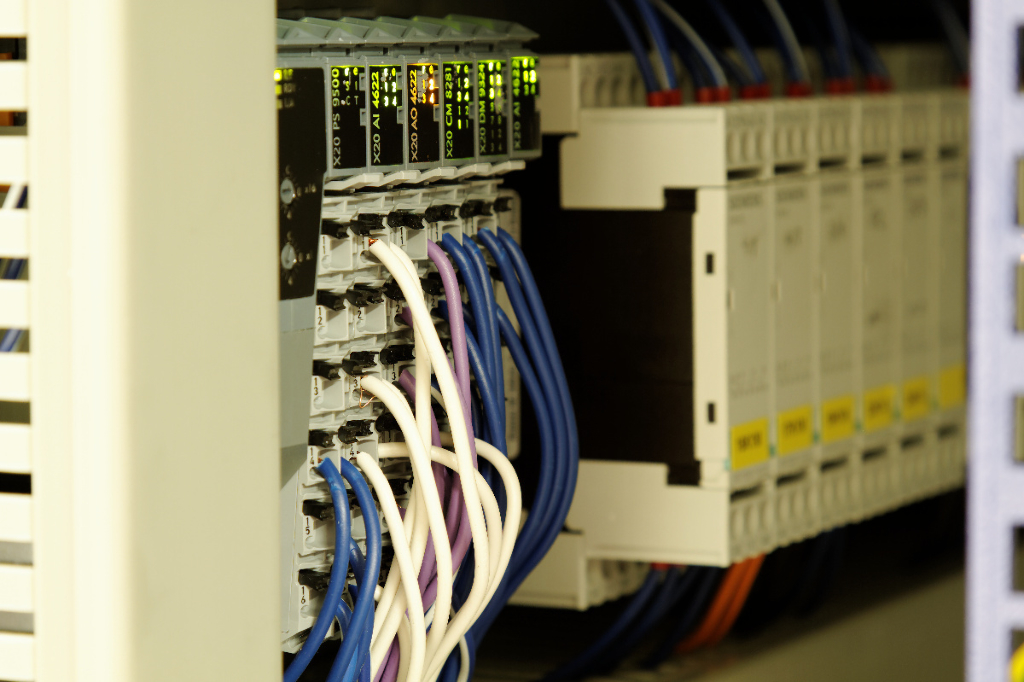
Small quantities of purified air with a defined temperature and humidity are in increasing demand among manufacturers of cars, semiconductors and pharmaceuticals for use in their laboratories, measurement chambers and processing plants. Conventional climate control systems are unable to produce such small quantities efficiently, however. The new high-precision climate control unit from pure engineering, featuring B&R technology, solves this problem – precisely conditioning between 2 and 10 cubic meters of air per hour while also purifying it of particulates and contaminants.
Increasingly stringent emissions standards, new production methods and pressure to optimize the quality and cost of products – these trends all increase the demand for climate control units that produce small quantities of precisely conditioned air. Ideally, they should filter out organic compounds and particles while they're at it. Conventional climate control systems, designed to output hundreds or thousands of cubic meters per hour, are ill-fit for this purpose.
"With a conventional climate control unit, to produce only 5 m³/h with a flow rate deviation of less than 2%, you would typically need to condition 500 m³/h. In other words, 99% of the air – which you've expended a great deal of energy to produce – goes unused. Technically, economically and ecologically, that's just not a solution," reasons Ralf Bräuer, managing partner at pure engineering, explaining the circumstances leading to the development of the pureCAM low volume climate control units.
Oversized climate control units are expensive to buy and generate unnecessary costs throughout their entire service life. This is especially true in applications that require additional filtration systems to meet heightened restrictions on the concentration of particulates and organic molecules. The volume of air being processed influences not only the concentration of contaminates at the intake and outlet but also the deposition rate that the filters can achieve. An appropriately sized climate control system is therefore particularly important.
Solving climate control challenges
What seems efficient and practical from the user's perspective – having small quantities of processed air supplied on demand – is deceptively challenging from a climate control perspective. This is one of the main reasons climate control units with a volumetric flow rate under 100 m³/h are such a rarity. The volumetric flow rate plays a pivotal role in controlling the temperature of processed air. The lower the flow rate, the lower the required cooling capacity of the heat exchanger. At a volumetric flow rate of 5 m³/h you need no more than a few watts. The decisive factor is the level of precision with which the cooler's power output – and with it the air temperature – can be controlled. Controlling the temperature with a precision of ± 0.2 K would require controlling the heat exchanger with a precision of ± 300 mW. The situation is similar when it comes to the humidity of the processed air and the capacity of the humidifier – roughly 50 g/h for a volumetric flow rate of 5 m³/h. To control humidity with a precision of ± 1%, you only need a water supply of 14.7 mg/min – hardly enough to fill a single-dose syringe.
When it comes to designing a low volume climate control unit, this example illustrates just how crucial it is to have a perfectly tuned, highly precise and dynamic system of sensors and actuators – and a control system to match. "After years of success with B&R control systems, we were confident using them in the new pureCAM units as well," reports Bräuer. pure engineering has built a range of different systems and test stands using B&R control solutions.
"B&R's engineering environment allows us to adapt quickly to changes in the hardware or software. The libraries they provide and the excellent support we've grown accustomed to from B&R's experts made developing our firmware considerably easier." Ralf Bräuer, Managing Partner, pure engineering
Modular I/O for flexible climate control
"B&R's X20 system offers the modularity we need, along with a rich selection of fieldbus interfaces and I/O modules. This gives us the flexibility to select the optimal components, install them with minimal effort and then integrate the whole thing into the higher level control software of a test stand," says Bräuer. "What also speaks in favor of the X20 is the high resolution of the analog input cards. The 12-bit resolution allows us to achieve the control increments of 0.02 K that we need for a stability of ± 0.2 K."
Bräuer also praises the extensive programming possibilities offered by Automation Studio's integrated software development environment. "B&R's engineering environment allows us to adapt quickly to changes in the hardware or software. The libraries they provide and the excellent support we've grown accustomed to from B&R's experts made developing our firmware considerably easier."
The standard model of the compact 19" pureCAM system with integrated scrubbers for particulates and volatile organic compounds (VOCs) is designed for automatic operation. In this mode, the integrated X20 controller receives the setpoint values for flow rate, temperature and humidity via Ethernet from the higher level test stand controller, which can then return the current process variables as actual values. Optionally, the unit can also be equipped with a B&R Power Panel, allowing the operator to enter setpoints and monitor the current state of operation locally. The integrated operator interface also makes it easier for service personnel to troubleshoot and perform targeted maintenance.

Meets test specs efficiently and ecologically
The specifications for automotive emissions testing require extremely high precision, even when conditioning and purifying very small volumes of air. The standard model of pure engineering's robust and reliable pureCAM is designed for flow rates from 1 to 10 m³/h (± 2%) and guarantees temperature stability of ± 0.2 K and humidity control with a deviation of no more than ± 1% of the relative humidity.
The pureCAM is an economically and ecologically responsible way for users to meet the most stringent flow rate, temperature and humidity tolerances for processed air used in their laboratories, test stands, measurement chambers and processing plants. The flexibility of B&R's control solution makes the units exceptionally scalable and easy to integrate in higher level control systems.